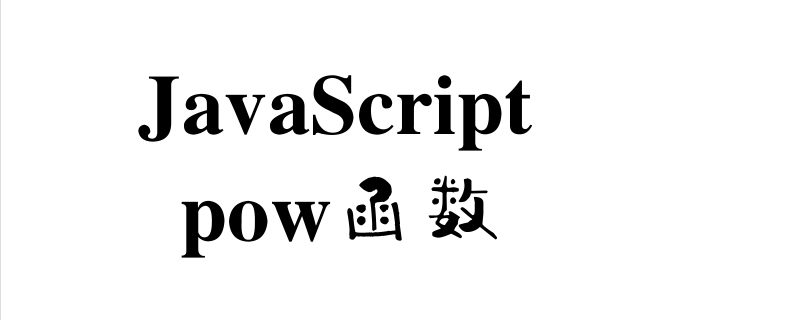Home >Web Front-end >JS Tutorial >How to use pow function
The Math.pow() function in How to use pow function is used to represent the power of a number, which can return the value of x raised to the y power. Let’s take a look at the specific use of the pow function.

Let’s take a look at the basic syntax of the pow function
Math.pow(base, exponent)
base represents the base.
exponent represents the index.
Description: If the result is an imaginary or negative number, this method will return NaN. If a floating point overflow occurs due to an exponent that is too large, this method returns Infinity.
Let’s take a look at an example of pow function application
When both base and exponent are positive numbers passed as parameters:
The code is as follows
<!DOCTYPE html>
<html>
<head>
<meta charset="utf-8">
<title></title>
</head>
<body>
<script type="text/javascript">
document.write(Math.pow(9, 3));
</script>
</body>
</html>The execution result is as follows: 9 to the third power
729
When the base value is negative and exponent is positive:
The code is as follows
<!DOCTYPE html>
<html>
<head>
<meta charset="utf-8">
<title></title>
</head>
<body>
<script type="text/javascript">
document.write(Math.pow(-9, 3));
</script>
</body>
</html>The execution result is as follows: -9 raised to the third power
-729
When the base value is positive and exponent is negative:
The code is as follows
<script type="text/javascript">
document.write(Math.pow(9, -3));
</script> The execution result is as follows: 1/9 to the third power
0.0013717421124828531
This article ends here. For more exciting content, you can pay attention to other related column tutorials on the PHP Chinese website! ! !
The above is the detailed content of How to use pow function. For more information, please follow other related articles on the PHP Chinese website!